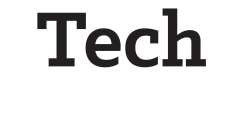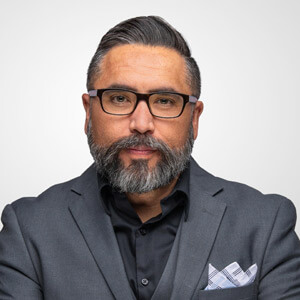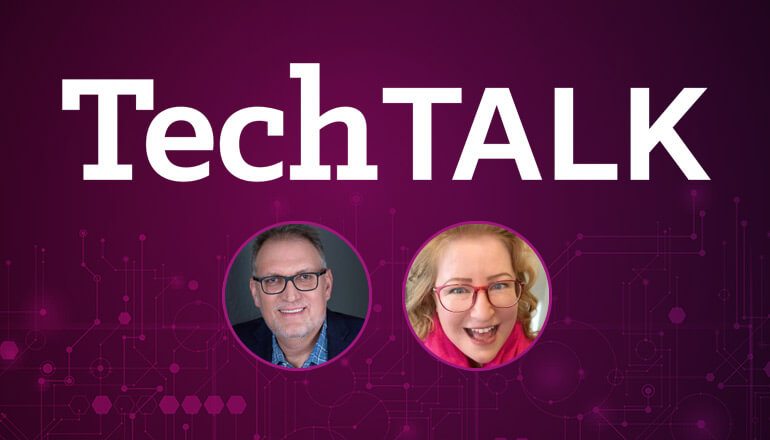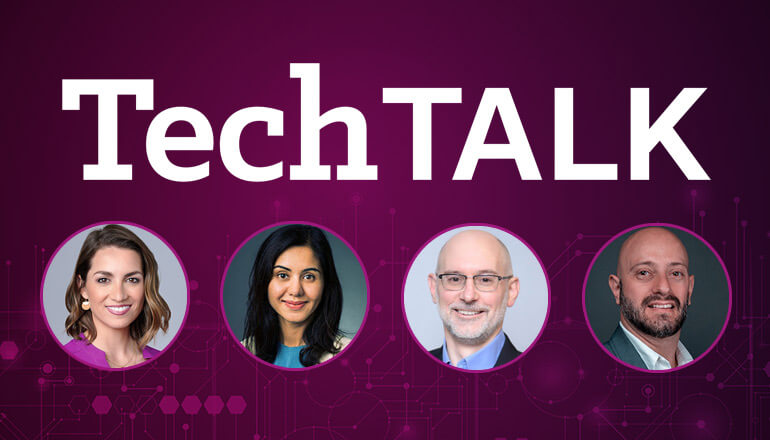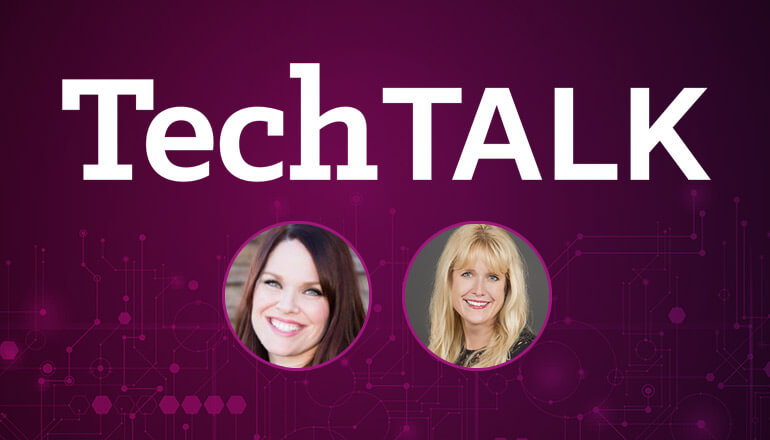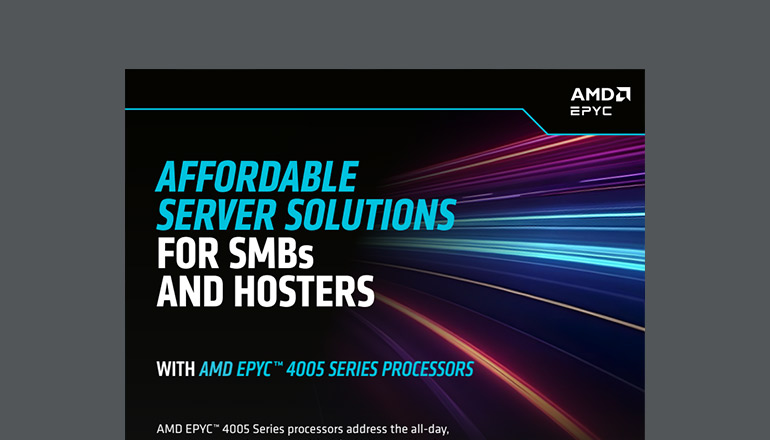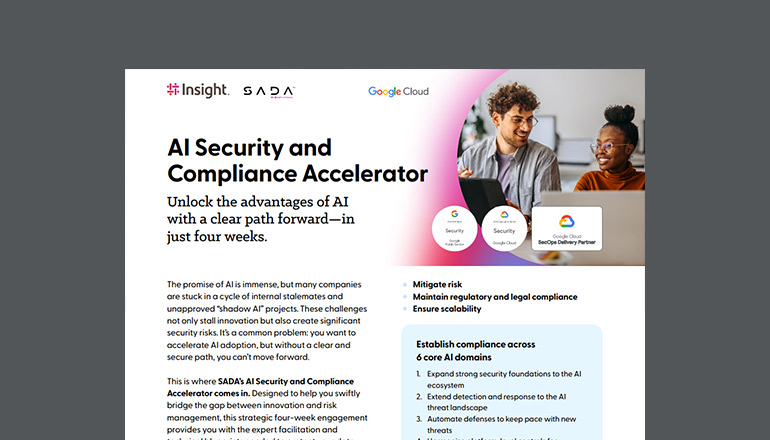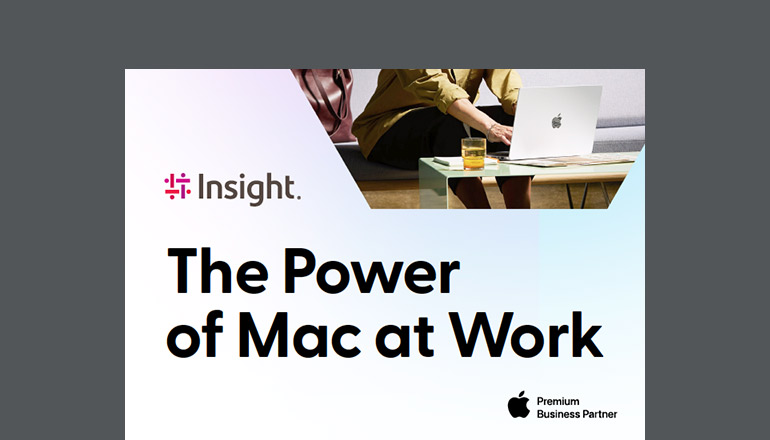Audio transcript:
How Intel Is Empowering Ambitious Healthcare Goals
Z Tinoco
Accelerated by the pandemic, the healthcare industry is experiencing an incredible digital growth and innovation but not every healthcare organization has been keeping pace. In this special CXO Edition of Insight TechTalk we're going to get some insight on the solutions changing healthcare as we know it and find out how providers can be prescriptive about the technology that provides better patient care. Welcome to Insight TechTalk, I am your host Z Tinoco and with us today we have Chris Gough, worldwide GM of Intel Health and Life Sciences. Welcome to the pod Chris.
Chris Gough
Thank you, happy to be here.
Z
Now I have a question, what does a worldwide GM of Intel Health and Life Sciences do at Intel?
Chris
Well Intel's a big technology company. We have a long history of innovation and developing new technology. We're not a healthcare company, we're a health and life sciences company so the role of my team is really to understand what technology we have, what's coming and some of the key business challenges that our health and life sciences organizations are facing and how we can apply some of that technology to improve what they do on a daily basis in concert with our partner ecosystem and, you know, great partners like Insight. Healthcare organizations need to be ambitious about their IT goals because they're facing personnel and staffing issues and challenges like ever before. IT technology when deployed the right way, can help them address those challenges, become more efficient and apply their scarce resources where they can have the greatest impact.
Z
Fantastic, well we have a lot of topics to discuss today so I want to start off with this first question for you Chris is, healthcare is rich with opportunity for digital transformation and innovation. We see this both in customer and medical wearable technology, of course also telehealth. What is Intel doing in this space?
Chris
Well, our focus is to help health and life sciences organizations use data and technology more effectively to become less reactive and more proactive and predictive and certainly we saw the use of telehealth take off during the pandemic especially during the earlier part of the pandemic and one area where that might not be quite as obvious is on the inpatient side, inside the hospital. So, you know, really needing to protect both caregivers and patients from potentially catching COVID, how can you reduce the need to meet face to face or physically in a hospital environment? And so one place a lot of hospitals are investing or deploying technologies with virtual ICUs. So being able to view the telemetry across population of patients in the ICU, in some cases control devices or at least read the devices remotely and with one of our key partners in this space, Medical Informatics Corp and their platform Sickbay, even have predictive algorithms that can alert the staff when there might be a cardiac issue for one of their patients they need to proactively sort of intervene to prevent something bad from happening. So, you know, telehealth across the spectrum, outside the hospital, inside the hospital, not only improving safety but also efficiency.
Z
Wow, yeah. I mean it seems like there's a lot of elements and sometimes being from the outside looking in, we only get a glimpse or maybe what we're exposed to but it's amazing to see what is happening in all these different realms or areas in healthcare. Well, here's the question for you? I mean, what Intel innovations are you most proud of at this time?
Chris
Well we've got a lot of tech innovations but I think one thing I'd like to highlight is more of a program innovation, you know, like a number of companies, you know, it's all being a large global technology company we had a pandemic program we put in place in 2020 called our Pandemic Response Technology Initiative or PRTI, where we used our technology to work with partners, work with users of our technology like hospital systems and pharmaceutical companies to try and accelerate some deployments that could help with the response or future hardening systems for perhaps future ways or future pandemics. We have since changed that program a bit or the focus of it to be aligned with our corporate social responsibility goals which we call our rise goals, which stands for responsible, inclusive, sustainable, and enabled by technology. So it's broader than just the pandemic, it's helping improve healthcare with technology, helping underserved communities, improving sustainability. So really a much broader initiative but I love the fact that we took something that we put in place for that emergency situation that we faced in 2020 and now it's a ongoing program that we can use to, you know, help society in a number of ways with our technology in our partner ecosystem.
Z
That's amazing. I mean, I find it fascinating when organizations, you know, align with your values, right? In the projects and the technology that we work for, that we work in or that we develop, I think that's amazing. I mean, I know here at Insight we're big when it comes to those things as well, you know, making sure that we're living and breathing our values in everything that we do. So it's good to hear that you're doing the same.
Chris
Yeah, great, great. Thank you.
Z
Yeah, yeah, no problem and I know we mentioned already telehealth a few times and, you know, '22 there was a huge explosion or a huge demand for it and it really a lot of visibility but I'm curious, what are the lesser known ambitious ways technology is being applied in advanced healthcare? You know, if you can provide some examples that'd be great.
Chris
Sure, so one area, you know, it's hot buzzword has been for a number of years now, AI or artificial intelligence, what we've found is that no healthcare organization is going to adopt or deploy AI just for the sake of having it, you know, we've got AI now. So it's really all about the outcomes. How can you improve efficiency or patient care or staffing levels, using some of these capabilities? And so where we are working with the industry to have an impact is in a few areas, you know, one is medical imaging. So either improving the workload that radiologists have today, making them more efficient, empowering them with new tools and technologies to, you know, help improve diagnosis or speed up diagnosis. Second is an area called natural language processing where AI is really being used to understand what's being spoken or to search through clinical text among the kind of unstructured doctors and nurses notes so one key area NLP is having an impact is what's called the digital front door.
So being able to make the, you know, could be the call center more efficient or help patients navigate to receive the right care or be put in touch with the right provider by using technology to understand what they're asking and point them in the right direction and then last I'd like to point out is what I think of as risk stratification. So looking across historical data across a number of different use cases, figuring out where certain, you know, adverse events may have happened or outcomes that you want to avoid and be able to predict when those are about to happen and intervene proactively to stop that so one example there is, you know, I know Insight worked closely with a provider called Steward Healthcare. They were interested in reducing the length of stay for patients in their hospital and so they deployed these kinds of capabilities, predictive analytics, predicting when a patient was at risk for longer than expected hospital stay, they were able to predict with 90% accuracy the demand or the census, patient census, you know, a week into advance so being able to optimize their staffing levels to accommodate that so it's really a good example of using data, using technology to proactively prepare for something that's coming instead of, you know, the alarm goes off and responding, you know, after the fact.
Z
Yeah, it's all about being proactive. Exactly what you, that I heard you say, right? Is if we can find a way to proactively help patients and more importantly, I mean, just thinking about, you know, you're going through something, you're in a hospital, you're not in your bed, you're not with family, if we can find a way to be proactive and minimize that stay time, of course, you know, taking their health, they're ready to go, that is a win-win, right? Not only does a patient now get to sleep in their own bed, spend time with loved ones, but, you know, and hopefully a smaller hospital bill, as we know.
Chris
Right.
Z
But the other stuff it's a hospital wins too, right? Now they can service and help other patients that are needing that extra bed to make sure as, and as we know, during that, you know, the past two years, that's been a big topic that there was a bed issue, right?
Chris
Yes it's really, you know, the industry was already facing a shortage of caregivers before the pandemic hit and now like we've seen across all segments of society, all segments of the economy, staffing shortages are a huge issue. So anything we can do using tools, you know, and we're a big tech company so using technology, using tools to help, you know, target those scarce resources where they're needed most, where they're going to have the greatest impact or help streamline a workload or workflow or make a clinical caregiver more efficient, we have to take advantage of those opportunities, right?
Z
Yeah, a hundred percent agree. Yeah, I mean I think, just make our lives easier and help everybody involved, right? It's a win across but tell us about, I know that there's something around accelerating clinical trials, is there something that you've done around that?
Chris
Yeah, we've got a, you know, one challenge is getting access to real world data across a number of use cases in healthcare and drug discovery and clinical trials. The data you need is locked away in silos at a, maybe a particular provider or inside a electronic health record system. I mean this is data we have to protect, you know, look at, you know, to meet with HIPAA regulations or GDPR regulations, it's largely patient data subject to those regs so you have to protect the privacy but you still want to be able to operate in that data. So we have a technology, you know, sort of baked into our indoor processors called trusted execution technology that basically lets you, it protects data while it's used in memory. So it can protect the privacy and information, you can kind of move algorithms into, you know, into where the data resides, run it there and neither the application or algorithm nor the data can access that memory partition. So really, I think it's going to be a game changer. You mentioned clinical trials, we're working with a couple partners there on some blockchain based approaches where the data across a large population of patients is analyzed, when a clinical trial comes you can search across that those patients to find the best potential matches for those clinical trials, empower patients to receive requests and consent and get financially reimbursed for their participation and really streamline that very complex and time intensive process of getting recruitment in a timely manner. So that's one example of a use case that's improved by having easier access to real world data but there's a host of them across the healthcare provider and payer and biotech landscape.
Z
Yeah. No and I think I mean, you, I don't know. I just don't see that ever separating, right? When we're talking healthcare, we're talking security, we're talking keeping things and like you mentioned the word silos, just protection overall and I think that's just so important, you know, for our patients and our healthcare providers to have that peace of mind. Now, let, I mean, we've been talking about it a few times already, it has come up, right? Telehealth obviously is a popular buzzword, or it's a popular technology being used and we know it's here to stay so how are you seeing telehealth solutions being applied moving forward?
Chris
Well I think one, you know, I view it kind of like what we saw many years ago with electronic health records when with meaningful use, the industry shifted from paper to electronic and then you got to certain level where maybe over 80% of the healthcare providers were on electronic health record years ago and then you, then the next sort of wave of innovation was around analytics and operating now that you have that electronic data, you can use it in innovative ways to predict what's going to happen to, you know, more effectively report across your patient population. So with telehealth, now you're taking what was an analog interaction between say a doctor and a patient where they would, the patient would come into the office, they would have a conversation, you'd take their vitals, you know, now that's happening digitally, the voice is recorded, the or digital, the video is digital, so there's research programs around the world, trying to look at what innovative things you could do with that digital data perhaps get help with finding new conditions they might have by analyzing the video stream or analyzing inflection to their voice that could be indicative of some kind of medical condition. So I think it's, you know, today it's really just all of about efficiency, but I think if you combine capabilities like artificial intelligence and machine learning with these new digital streams of data, you can really have big benefits and new use cases in the future. So I think that's where it's going is, is sort of fusing together the AI, the machine learning with telehealth to really improve patient care and make things more effective for the providers.
Z
Yeah, I mean I can't speak for everybody but when you hear this kind of things, right? Around technology, it just gets you goosebumps about like, wow, you're looking at voice inflection, you can catch these little things that can predict or can give us some kind of indication that somebody needs certain kind of help or care, that's amazing.
Chris
One other thing I'll touch on is patient observation. So there was, you know, before the pandemic came, there was some key use cases in the hospital that were enabled with the use of video in video analysis. So one example would be fall prevention. So using video for patients at risk for fall to just to, you know, see if they're getting out of bed and intervene and give them the help they need to prevent a fall from happening. When the pandemic came, you again you wanted to minimize unnecessary face to face interaction between patients and caregivers so we found that these systems put in for fall prevention were kind of repurposed, hey, hey, let's expand what we're doing here, let's get a video camera in all the patient rooms. Banner Health is a healthcare organization we work with to do this where they attached kind of a camera and a small form factor PC to all their, you know, TVs in their patient rooms and now they were able to improve the safety but they also found really big efficiency gains by being able to connect that patient with now a, a inpatient telehealth solution with staff that might be elsewhere in the hospital or maybe even in a different facility. So a lot of these innovations sort of came in for the need to improve safety and are now sticking around, not only because of those safety benefits, but also some of the efficiency benefits of not having to be in the room, touching the devices, touching the patient, every single time you need to interact with them.
Z
Yeah, again, amazing that we can even repurpose something and go this can be used for other things as well. I mean, we've been talking a lot about, you know, technology and being able to prevent and help patients but we also, you know, we're living in an environment where remote work is definitely now the norm and more and more and, you know, the ability to attract talent and getting that flexibility for future talent that you're looking to attain, I want to change this question now to more, hey, what has technology done in Intel specifically or what do you know about, you know, the remote work opportunities in healthcare that you've seen?
Chris
Yeah, the, you know, I sort of as a, being in a big tech company by Intel, well like Intel, sometimes we take it for granted where we have our own laptop, we can easily connect with VPN, we can connect anywhere, we have an internet connection in the world, a lot of society and different, you know, different kinds of organizations don't have that kind of thing by default so we saw a lot of healthcare providers trying to enable their workers that didn't have to be in the hospital where can they connect from home? You know, in some cases, this started with IT, you know, needing to reboot or manage a device, you know, they can use something that we have called active management technology to remotely manage that device. We worked with Intermountain on a project where they swapped all their operating systems from Windows to Linux for all their inpatient telehealth devices without needing to be on site or in the room. Do that all remotely. If you look more at sort of on the caregiver side, one area that is of big interest to hospitals is around radiology. So can you enable a radiologist to access the images and render a diagnosis from their own home where they don't have to come in to the hospital every time? So that's one area we're seeing hospitals, investors, and the solution provider ecosystem to make that use case or that, you know, segment of healthcare more easily provisioned remotely.
Z
Yeah.
Chris
So, yeah.
Z
Yeah, I mean, there it is right there, right? All the flexibility and what technology has enabled these healthcare organizations to be able to, you know, attract that talent and say, hey we have these options that gives you that flexibility, that opportunity to do your work, but now not just in, you know, traditional methods or way of doing it. That's great.
Chris
I mean, we went virtual everywhere during the pandemic.
Z
We had no choice.
Chris
How many Zoom calls or teams calls have you joined? You know, we talked about telehealth in healthcare, but that's happened everywhere and--
Z
Yeah.
Chris
You know, it's makes things faster, it is more convenient for the person or patient, you know, is the case may be. So there's just really a lot of benefits that this shift to virtual have unlocked and I'm curious to see, you know, sort of, as the, hopefully the pandemic becomes less serious over time, you know, how much of this persists going forward? Does it grow? Does it come back a bit from where it has been? I personally think we're, it's kind of the new normal and you know, we'll, here across the board, it's here to stay and we'll grow from where we are today.
Z
Yep, a hundred percent. I think to your point, I really love how, when we were put in that situation how, you know, technology was accelerated, right? We were put in the situation, we have to all hands on deck, we have to make this possible but let's continue that right now that things are starting to look a little bit brighter for us, let's keep that momentum going and then make things easier, efficient, everything that technology brings to our lives so.
Chris
Yep.
Z
Okay, so we've talked a lot, you know, around the healthcare side, we also have talked about attracting talent and how to, you know, what does careers look like in healthcare? But as we know, the quality of care requires quality of modern technology, but unfortunately there are some healthcare organizations that have not, you know, had the resources or are able to afford those technology refreshes. What happens then to those types of organizations?
Chris
Yeah, well I'm very proud that Intel was able to work with Insight on modern workplace makeover contest, where contestants could sort of submit some information about their situation, what their needs are and a number of winners were selected, not exclusive to healthcare, but there were a couple healthcare winners. One was on the productivity side, the River Valley Counseling Center. They had really old aging IT equipment, you know, to take advantage of the innovations we've talked about in this call, you need that, you know, foundation, that digital foundation, you know, that you can deploy some of this innovative tech on top of and so they, you know, for example, estimated they were losing 25% of their productivity just waiting for the systems to boot up for the applications to load so hopefully as a winner of this contest, we can jointly help them modernize that equipment and just get the baseline benefits that come with having, you know, up to date IT gear. And then on the, there was a second on the security side, a security winner, Lane Regional Medical Center, they were still, believe it or not, had Windows seven deployed in a lot of places across their enterprise. So from a security and vulnerability perspective, you know, not the best option so, you know, being able to modernize their equipment, get them on latest devices and operating systems that are patched regularly with security patches up to date, reduced their exposure to some of the modern vulnerabilities. So those are, and hopefully those can serve as examples for others to emulate with some of the benefits you can get from the security and productivity perspective with just simply, you know, modernizing your equipment.
Z
Wow, I just love that. Hopefully this is a good call to action to others, right? To say hey, well how can we help and support other healthcare organizations providers that are, you know, a little bit behind and need some help? For me it just feels good knowing that we were able to give them something that can help, you know, help provide better care and provide an environment for their employees to be able to do their job more efficiently. So, amazing. I'm really proud of that. Okay, so wrapping it up, when it comes to IT, what can you tell us about remote IT services in your space?
Chris
Yeah, I touched on it a little bit earlier but this, you know, being able to manage your fleet of devices, you know, remotely, where you don't have the, the employee doesn't have to bring their laptop into the IT center, the technician doesn't have to go to the patient room and work on the device. Yeah, so we've worked with a number of organizations in healthcare. You know, I touched on Intermountain earlier, the NHS, National Health System in the UK is another health system we've worked in this area where you can enable the IT staff to manage even if it doesn't boot up, they can work on it remotely, you know, this technology sits at the lowest level of the hardware below the operating system, below the bios, they can swap on operating systems, reboot, do all these things across a fleet of devices. So it really, you know, during the pandemic served, you know, sort of that dual purpose of minimizing unnecessary face to face contact and making the staff more efficient and so hopefully, it becomes another example of something that maybe was deployed for one reason but sticks around due to the efficiency gains.
Z
Excellent, well thank you Chris. I mean, just to wrap up, I know we covered again a lot of, lot of elements today, we've provided some good information. Is there any other advice for anything else you can tell our audience that, you know, again, when they're thinking about how to provide a better experience in health in, when it comes to the healthcare industry, when it comes to their patient care, their environment, any other advice that you have for them or anything to take away or close out with?
Chris
I think just, you know, we talked a lot today about using data and technology to become less reactive, more proactive and predictive. I believe this also gives us a great opportunity to make sure we're targeting the human capital, the scarce human capital in healthcare where it can have the greatest impact and so we're, Intel's excited to continue this mission as we engage with health and life sciences organizations and great partners like Insight to bring these solutions and capabilities to healthcare everywhere.
Z
Well, thank you very much Chris. I appreciate your time. I know we all, we gather a lot of great insights and nuggets of wisdom from you today. Thank you again for it with your partnership and your partnership we have with Intel. If you want to learn more about this topic, please go visit our sites at insight.com/ambitioushealth. Until next time, bye bye.
Chris
Thanks a lot.
